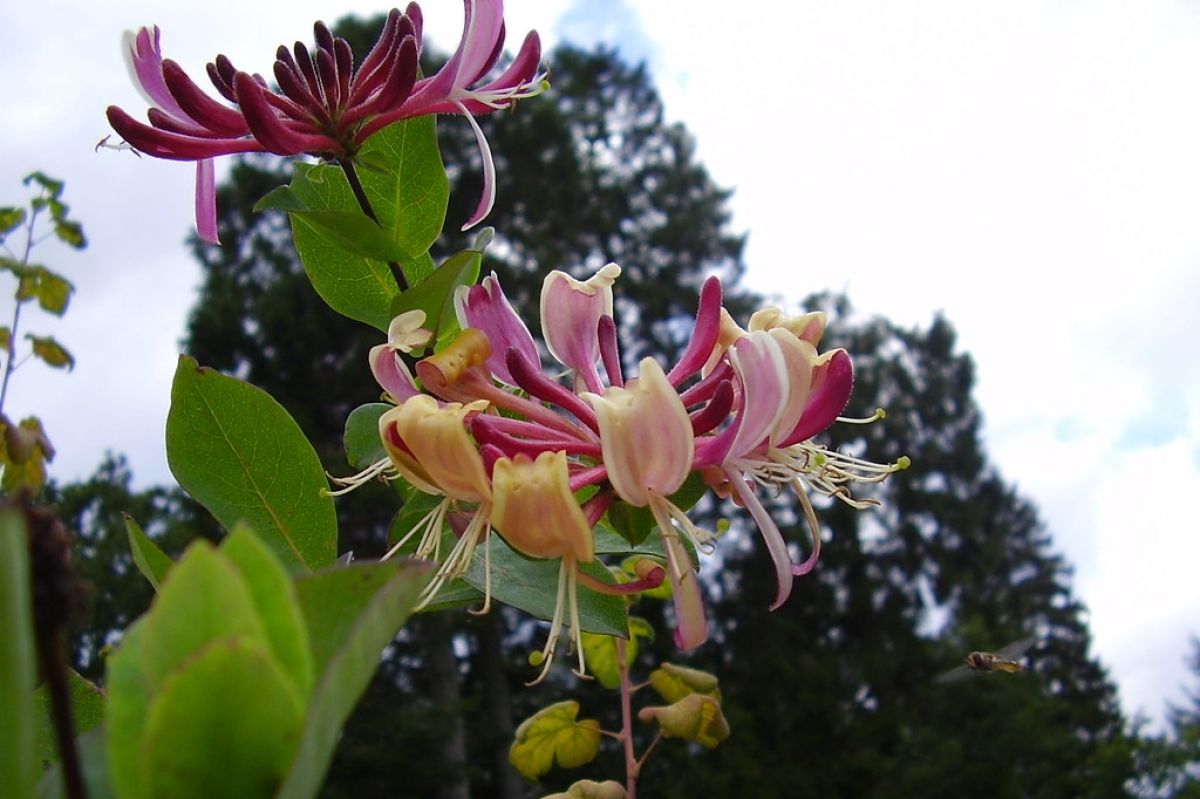
Lonicera periclymenum ‘Serotina’ with a little hoverfly. (epicnom, flickr)
The perfume of honeysuckle can be intoxicating, but the rampant vines can be a pain! A common name is woodbine because its woody stems twine clockwise around anything in its path.
Shakespeare referred to woodbine frequently in his plays. The old herbal name was caprifoliumfrom the Latin for goat. I read that is because the plant is nimble at climbing, just like a goat. In the Victorian language of flowers, giving honeysuckle was a way of acknowledging a lady had a sweet disposition.
- Japanese honeysuckle (Lonicera japonica) is the most invasive of all of the members of the honeysuckle family.
- The L. americana species is more polite but only hardy to Zone 6. It is more yellow than some varieties and has lots of maroon streaks on its flowers.
- A red-purple streaked variety of honeysuckle named ‘Serotina', with the common name of Dutch honeysuckle, is hardy to Zone 5.
- There is also a honeysuckle shrub, Lonicera fragrantissima, which is native to China and flowers in the U.S. in late winter and early spring and is hardy to Zone 5.
Prune honeysuckle hard after it flowers.
It is possible to grow it in containers that are wide and deep enough to insulate the roots in winter. The yellow-flowered ‘Honey baby' variety works best for this.
For the species that are invasive, be sure to deadhead it so the birds don't spread the seeds.









